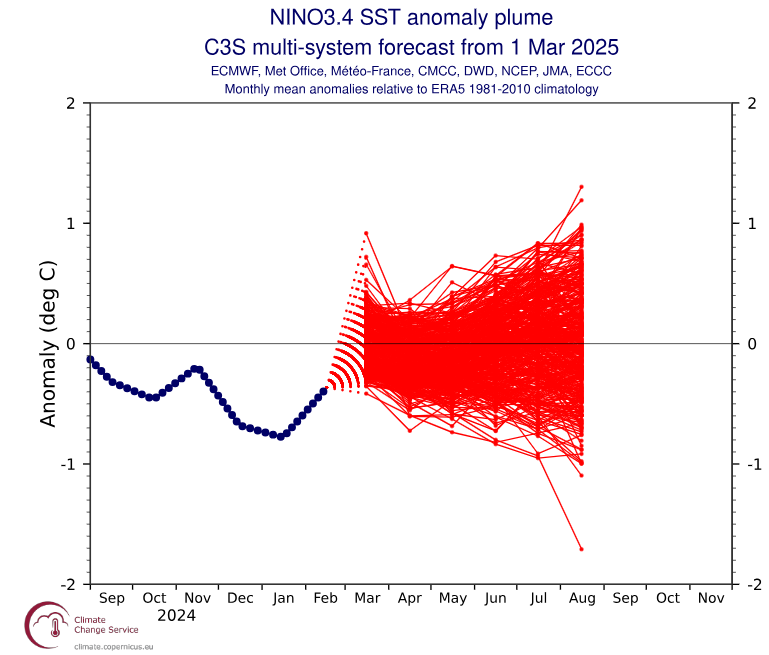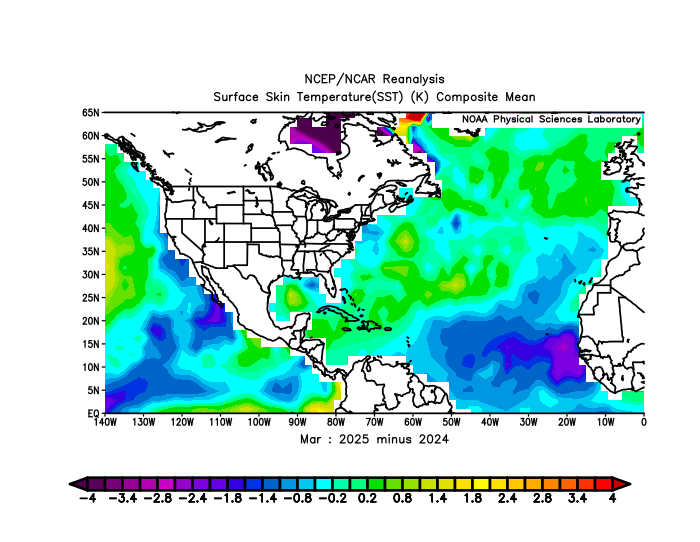In brief: Sunshine for days in Houston.
To be honest, there is very little to discuss with respect to Houston’s weather forecast. We expect sunshine, warm and dry weather, and some ground ozone/air quality issues in the mornings and evenings over the next few days. Highs will be in the 80s with lows in the 50s and 60s. Beginning around Sunday, we’ll add some more humidity to the mix and slightly hotter weather with highs near 90 degrees by Monday and lows in the 60s. Overall, it looks great, albeit a little hotter than usual for April.
Our next meaningful rain chance likely does not come until the middle of next week, if then. More to come.
Hurricane season preview
With that out of the way, we know some of you were curious about our thoughts on Colorado State’s hurricane outlook released last week. I posted a bit about that over at our nationally-focused companion site, The Eyewall yesterday. I am posting most of it again here to reach our Houston audience.
Late last week, the team at Colorado State University issued their always hotly anticipated seasonal hurricane outlook for the Atlantic Basin. To clear this up at the beginning, their forecast calls for:
- 17 named storms (normal 14)
- 9 hurricanes (normal 7)
- 4 major hurricanes (normal 3)
- Accumulated cyclone energy: 155 (normal 123)
Nothing about this forecast on the surface is especially notable or alarming or fascinating. It’s simply a slightly above average forecast.
But what is somewhat notable about their forecast is some of the under the hood items they address. First, we are likely to be coming out of a La Niña event, something we discussed last back in February. But as the CSU team notes, we don’t know for sure if we’re headed for El Niño or ENSO neutral (La Nada) conditions. ENSO neutral summers combined with warm water temperatures “typically provides a more conducive dynamic and thermodynamic environment for hurricane formation and intensification.” In other words, hurricanes like those background conditions.
We do not yet have a “plume” from the C3S suite for April, but the March plume skewed slightly toward El Niño development.

If we get to El Niño conditions by late summer or fall, that does not guarantee that conditions will shift to become more hostile to hurricane development. But that may take the edge off a bit. However, if we “hang” near the neutral line or even in weak La Niña territory, any hostile conditions may be apt to stay away, ensuring a busier season than usual.
In addition to the forecast for named storms and such, the CSU team also does try to convert that seasonal outlook to a prediction of U.S. landfall risk. Indeed, with a more active season expected, the odds of a U.S. landfall are also higher. They have a 51 percent chance of a major hurricane landfall on the U.S. coast, compared to a historical average of 43 percent. The odds on the East Coast are 26 percent, compared to 21 percent typically. And in the Gulf, the landfall odds between the Florida Panhandle and Brownsville are 33 percent versus a 27 percent average.
According to the CSU team, all model guidance is pointing to an above-normal season. Water temperatures remain well above long-term averages across the Atlantic. As we noted earlier this year, however, this is not last year’s Atlantic sea-surface temperature profile. But it’s still quite warm.

From the map above, you’ll notice that the eastern Atlantic has cooled markedly since last year, however the Gulf, Caribbean, and northern Atlantic Ocean are all warmer. The fire that was burning all last summer in the eastern Atlantic is still smoldering, but it has been somewhat extinguished. The Gulf and Caribbean are another matter. The Gulf is warmer than 2024 by a good bit but still lags 2023. While the Caribbean was warmer than 2024 in March, it has since cooled some in April, taking it back under 2024 levels. Water temperature conditions can change quickly, but the bottom line is that the Atlantic, with the exception of the eastern basin are in the upper echelon of warm years at this point. The warmer overall waters in March in the eastern North Atlantic (north of the tropics), along with the warm Caribbean do correlate to active hurricane seasons.
The bottom line is that the underlying data support the idea of an active hurricane season — but not to the levels feared last year. But there aren’t very many red flags at this time arguing against that outcome. At least last year, we had the expectation of a developing La Niña to help grease the wheels a bit, and a slow development could have slowed the hurricane season a bit. This year? There’s no real glaring red flag that says the season will bust. But hurricane seasons always have surprises. Hopefully this year’s involves calm.

Oh my
Weather porn….
Hurricane season = time to panic until October.
Thank you for giving us the real take on the hurricane numbers, it’s easy to get worked up about it sometimes.